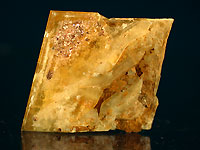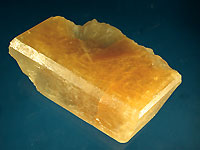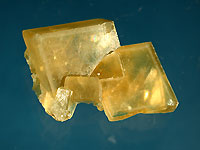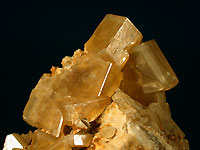|
|
Baryte deposits in Chatel - Guyon
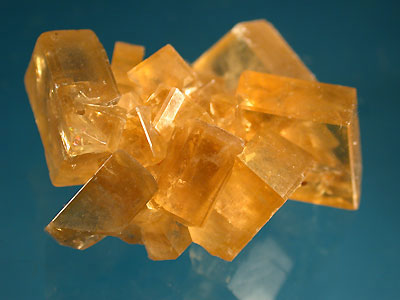
Geological context of Limagne:
The
plain of Limagne is a sedimentary estate included between two major granitic zones:
- the Western granitic zone, site of the volcanic activity that is responsible
for the Chain of Puys.
- the granitic zone Est that corresponds to the Livradois-Forez
mounts.
Limagne can be divided into two estates: Limagne of Clermont-Ferrand
and Limagne of Issoire (63)
The plain of Limagne results from a distensive
E-W activity that structured the area in horst and graben, during the tertiary
era.
In
order to obtain a basin of collapse such as this one of Limagne, we need a set
of two normal faults that subside the central granitic compartment (the graben)
and that raise the external zones (the horst).
The Western fault of the collapse
basin, it's to say the fault of Limagne, is partly responsible for our coveted
mineralisations. Yet, its Eastern counterpart located in the mounts of Forez is
also the site of some barite deposits (old quarries are embanked in the surroundings
of Laugh…).
Of course, this progressive depression is carried out in
a sedimentary context, and in this case, in a fluvio-lake context as the Helix
Ramondi fossil which is the ancestor of our snail, located in the surroundings
of Bridge-of-Castle testify it. Sedimentation is carried out during the Oligocene
era (33-23 million of years) under weak water sections (our lake snail supporting
only a few centimetres.) giving detrital facies, arkoses during the Oligocene
inferior era and then giving limestones and marls during
the Oligocene superior
era. This phenomenon being carried out during the movement of subsidence, the
thickness of sediment reaches, at the deepest, to 3000m of thickness.
The
fault of Limagne puts in tectonic contact the elevated zones (the granitic plate
in the west of Clermont, the horst of St-Yvoine in the north of Issoire and the
mounts of Forez) with the sedimentary Limagne formations.
| Monocrystal
of "floating" barite. 4 X 4 X 1 cm. | Monocrystal
of "floating" barite. 6 X 3 X 2,5 cm. |
Deposits
The
most of the barite deposits areclosed to the contact between the sedimentary grounds
and the granitic hercynians grounds dating from the carboniferous era (320 million
of years).
The basement is made up in major monzonitic part of granite with
biotite (% of biotite being slightly higher than that of muscovite.) Mineralisations
are located in the faults but at different depths.
Some deposits are located
in the main zone of the faults, which is the intense site of crushing; it is what
we call the mylonitiques ones. Others deposits are in more superficial zones filled
by granitic not crushed fragments that are welded between them by the fluids.
They constitute the brecciated zones.
From the North to the South, the deposits
are numerous along the Limagne fault. The most Southern is located in the surroundings
of Combronde and Chatel-Guyon. Others deposits are closed to them as those ones
of the "Sans Souci Valley", Rochepradière, Enval. The indications
in the neighbourhoods of Royat, Ceyrat, Boisséjour are as many markers
that leave you a certainty: the fault is not far!
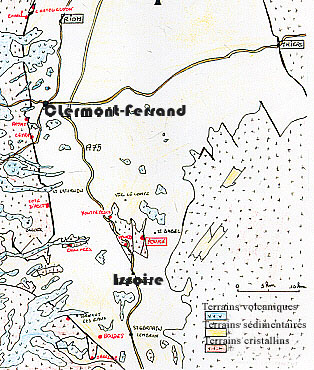 |
Geological map simplified of the plain of Limagne and situation of the various ore deposits of barite. |
| 3
interpenetrated crystals (barite) 3 X 2 X 1 cm. |
barite
on gangue Width sp. 6 cm.. |
Mineralisations
The fracturing was intense but the blocks constituting the genic mono breach
are large (ten centimeters). Thus, it proves us that the argillaceous zones are
narrow. Pressure of fluid was not enough strong to burst the healthy granite sufficiently
and to give broad fractures.
The usual direction of the fault is often NW.
The fault is locally papered by barite platings what give large but not very aesthetic
blocks; however the floating pieces are quite present in the broader and intersected
zones. In this case, the pieces bathe in an orange clay.
Type 1: Pieces
resulting from immediate strata of the fault without clay where the crystals are
strewn on the gangue.
Type 2: Pieces resulting from the breach and embedded
in a more or less fine granitic sand.
Type 3: pieces of the bottom of
pockets having undergone a recrystallization of white barite; we notice a frequent
dissolution of the recrystallization what gives crystals to decayed aspect.
Guillaume Mazankiewicz
| Diagram of the standard favourable zone. | 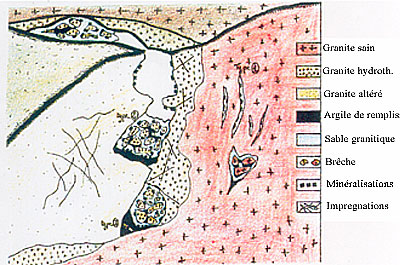 |
